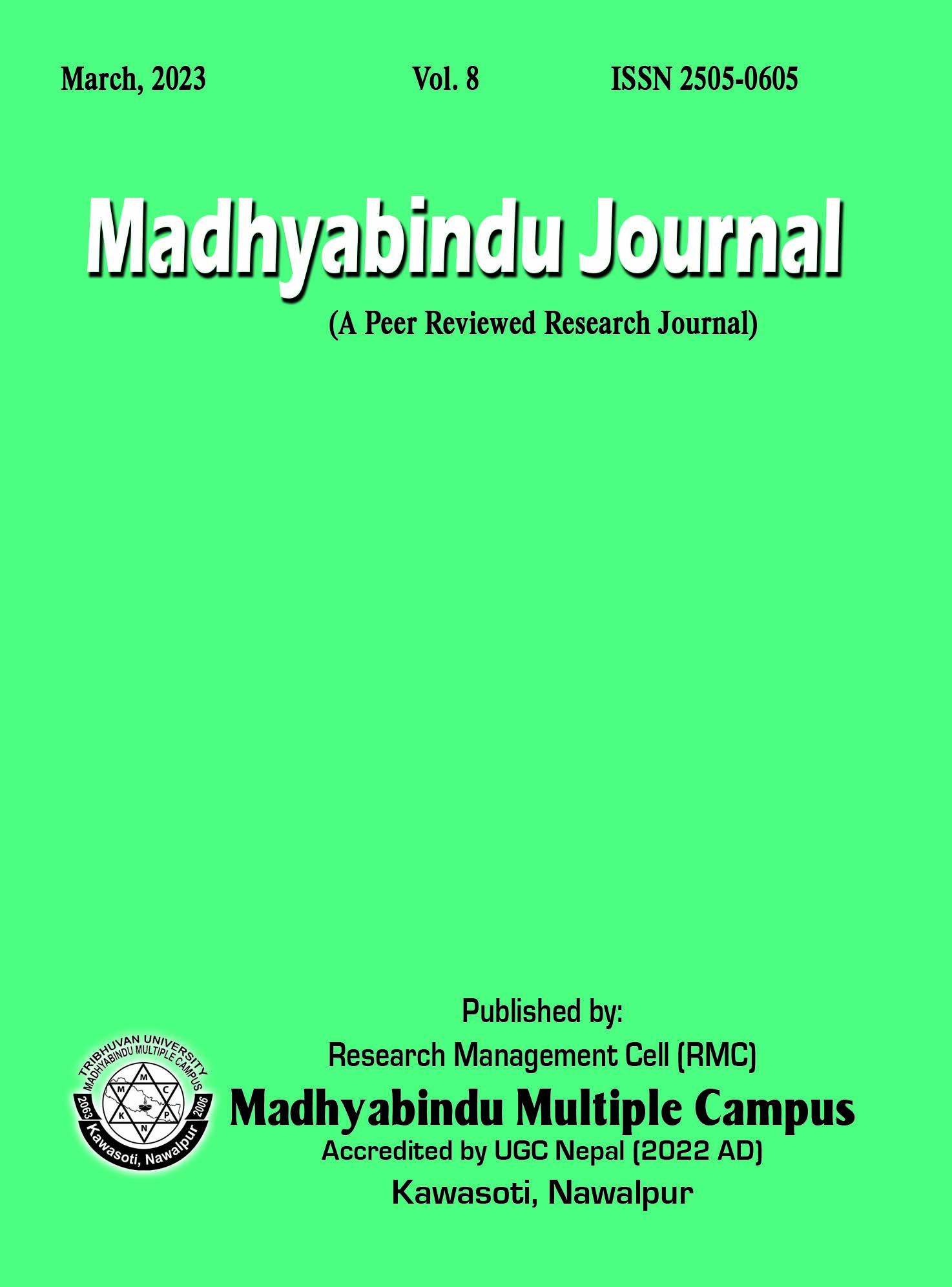Extra-Curricular Activities in Secondary Schools of Nepal: A Survey Study
DOI:
https://doi.org/10.3126/madhyabindu.v8i1.56879Keywords:
extra-curricular, student involvement, post-positivist paradigmatic, schools, educational achievementAbstract
This research explored the extra-curricular activities (ECA) in the secondary schools in Nawalparasi (Bardaghat-Susta East), district of Nepal. The research questions of this study incorporate stakeholders' (headteachers and secondary level teachers) perceptions, existing practices, problems, and remedial measures regarding practice of extra-curricular activities in secondary schools. The study is guided by Alexander (1999)'s student involvement theory and Vygotsky's socio-cultural theory of learning. The study population included 239 secondary level teachers and 78 head teachers from Nawalparasi (Bardaghat-Susta East)'s 78 public secondary schools. The sample was chosen using a simple random sampling method with a lottery. The study's samples included 150 secondary level teachers and 66 head teachers. This study was guided by post-positivist paradigmatic assumptions and was designed quantitatively. Data were collected using the survey method. A structured questionnaire was administered to secondary level teachers and headteachers to collect data. After collecting the data, it was entered into SPSS and analyzed using descriptive statistics--frequencies, percentages, mean and standard deviation, and inferential statistics with a non-parametric Chi-square test. The results of the five-point likert scale converted trichotomize scale and closed-ended questionnaires and revealed that teachers have a high level of awareness of ECA knowledge, its importance, and implementation. This study found that headteachers and secondary level teachers involved students in different extra-curricular and social activities to successfully complete school education, as Astin's and Vygotsky's theory explained. The practices towards ECAs were stated by NESP (1971) as an integral part of the school program in which participation would be compulsory for teachers and students and hence found compatible with the policy. In almost all cases, the responses of secondary level teachers and head teachers are nearly identical. As a result, headteachers and secondary level teachers, practiced and implemented ECAs to make them relevant and necessary for students' educational achievement.
Downloads
Downloads
Published
How to Cite
Issue
Section
License
© Madhyabindu Journal
The work is simultaneously licensed under a policy and procedure of Madhyabindu Journal, which permits others to distribute the work with an acknowledgement of the work's authorship and initial publication in this journal. With an acknowledgement of its original publication in this journal, authors can enter into separate, extra contractual arrangements for the non-exclusive dissemination of the journal's published version of the work (e.g., posting it to an institutional repository or publishing it in a book).




